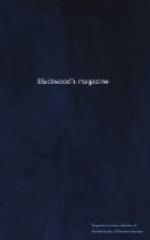The display of his own acquirements in various branches
of art and science, and of his rhetorical powers of
language in describing them, is indeed an object of
which Achilles Tatius never loses sight; and continual
digressions from the thread of the story for this
purpose occur, often extremely
mal-a-propos,
and sometimes entirely without reference to the preceding
narrative. Thus, when Clitophon is relating the
terms of an oracle addressed to the Byzantines, previous
to their war with the Thracians, he breaks off at
once into a dissertation on the wonderful qualities
of the element of water, the inflammable springs of
Sicily, the gold extracted from the lakes of Africa,
&c.—all which is supposed to be introduced
into a conversation on the oracle between Sostratus
and his colleague in command, and could only have
come to the knowledge of Clitophon by being repeated
to him
verbatim, after a considerable interval
of time, by Sostratus. Again, in the midst of
the hero’s perplexities at his threatened marriage
with Calligone, we are favoured with a minute enumeration
of the gems set in an ornament which his father purchased
as part of the trousseau; and this again leads to an
account of the discovery and application of the purple
dye. The description of objects of natural history
is at all times a favourite topic; and the sojourn
of the lovers in Egypt affords the author an opportunity
of indulging in details relative to the habits and
appearances of the various strange animals found in
that country—the crocodile, the hippopotamus,
and the elephant, are described with considerable spirit
and fidelity; and even the form and colours of the
fabulous phoenix, are delineated with all the confidence
of an eyewitness.
Many of these episodical sketches, though out of place
when thus awkwardly inserted in the midst of the narrative,
are in themselves curious and well written; but the
most valuable and interesting among them are the frequent
descriptions of paintings, a specimen of which has
already been given. On this subject especially,
the author dwells con amore, and his remarks
are generally characterised by a degree of good taste
and correct feeling, which indicates a higher degree
of appreciation of the pictorial art than is generally
ascribed to the age in which Achilles Tatius wrote.
Even in the latter part of the first century of our
era, Pliny, when enumerating the glorious names of
the ancient Greek painters, laments over the total
decline, in his own days, of what he terms (Nat.
Hist. xxxv. 11) “an aspiring art;”
but the monarchs of the Macedonian dynasties in Asia,
and, above all, the Egyptian Ptolemies, were both
munificent patrons of the fine arts among their own
subjects, and diligent collectors of the great works
of past ages; and many of the chefs-d’oeuvres
of the Grecian masters were thus transferred from
their native country to adorn, the temples and palaces
of Egypt and Syria. We find, from Plutarch, that




